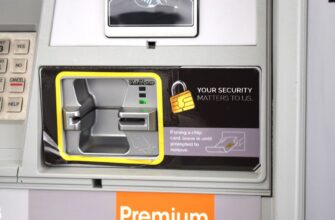- Unlock High Returns: Ethereum Staking on Kraken
- What Is Ethereum Staking?
- Why Stake Ethereum on Kraken?
- Step-by-Step: How to Stake ETH on Kraken
- Maximizing Your APY: Kraken vs. Alternatives
- Lending Alternatives: When Staking Isn’t Ideal
- Key Risks to Consider
- Conclusion: Is Kraken the Best for ETH Staking?
- FAQ: Lending Crypto Ethereum on Kraken
- What’s Kraken’s current ETH staking APY?
- Can I unstake ETH immediately?
- Is staking safer than lending ETH?
- Do I pay taxes on staking rewards?
- Can I stake other cryptos on Kraken?
Unlock High Returns: Ethereum Staking on Kraken
Seeking the best APY to lend crypto Ethereum? Kraken’s staking platform offers a compelling solution for passive income. As Ethereum transitioned to Proof-of-Stake (PoS), staking ETH became a cornerstone strategy for investors. This guide explores why Kraken stands out for Ethereum staking, how to maximize your APY, and critical considerations for optimizing returns.
What Is Ethereum Staking?
Ethereum staking involves locking ETH to support network security and operations. Validators process transactions and create new blocks, earning rewards in ETH. Unlike traditional lending, staking requires minimal technical expertise on platforms like Kraken. Key benefits include:
- Passive Income: Earn rewards without active trading
- Network Participation: Contribute to Ethereum’s decentralization
- APY Potential: Outperform traditional savings accounts
Why Stake Ethereum on Kraken?
Kraken dominates with user-friendly features and competitive yields:
- Best APY Rates: Up to 6% APY on ETH staking (rates vary by region)
- Zero Technical Hassle: No hardware setup or 32-ETH minimum
- Flexible Unstaking: Withdrawals processed within days
- Auto-Compounding: Rewards reinvest automatically
- Robust Security: Industry-leading custody and insurance
Step-by-Step: How to Stake ETH on Kraken
- Create/Log in to your Kraken account
- Deposit ETH into your Funding wallet
- Navigate to “Staking” > “Ethereum”
- Select desired staking amount
- Confirm transaction (no gas fees)
- Track rewards in “Earnings” dashboard
Rewards distribute twice weekly. Kraken handles all validator operations.
Maximizing Your APY: Kraken vs. Alternatives
Kraken’s ETH staking APY typically ranges 4-6%, outperforming competitors:
- Coinbase: ~3.5% APY with higher fees
- Binance: Variable rates (often below 5%)
- Self-Staking: Requires 32 ETH + technical setup (~7% APY)
Pro Tip: Kraken’s APY fluctuates with network demand. Monitor rate changes in-app.
Lending Alternatives: When Staking Isn’t Ideal
Prefer flexibility? Kraken also offers crypto lending:
- Margin Lending: Lend ETH to traders for interest (variable APY)
- No Lockup Period: Withdraw funds anytime
- Lower Minimums: Start with any ETH amount
Note: Lending carries counterparty risk. Staking remains safer for long-term holders.
Key Risks to Consider
- Slashing: Validator penalties (Kraken covers losses)
- ETH Volatility: Price drops affect USD value
- Lockup Periods: Unstaking takes 5-7 days
- Regulatory Shifts: Changing policies may impact rewards
Conclusion: Is Kraken the Best for ETH Staking?
For hassle-free Ethereum staking with top-tier APY, Kraken excels. Its blend of high yields, security, and simplicity makes it ideal for beginners and veterans alike. While self-staking offers marginally higher returns, Kraken’s managed service provides unmatched convenience. Start with small ETH amounts to test the platform, then scale your stake as confidence grows.
FAQ: Lending Crypto Ethereum on Kraken
What’s Kraken’s current ETH staking APY?
Ranges between 4-6% APY, updated dynamically based on network activity. Check Kraken’s official staking page for real-time rates.
Can I unstake ETH immediately?
Unstaking takes 5-7 days. During this period, you earn no rewards. Plan withdrawals ahead of time.
Is staking safer than lending ETH?
Generally yes. Staking involves protocol-level risks (e.g., slashing), while lending carries counterparty risk. Kraken mitigates both through insurance and safeguards.
Do I pay taxes on staking rewards?
In most jurisdictions, staking rewards are taxable income. Consult a tax professional regarding your local regulations.
Can I stake other cryptos on Kraken?
Yes! Kraken supports staking for DOT, SOL, ADA, and 10+ other assets with competitive APYs.








